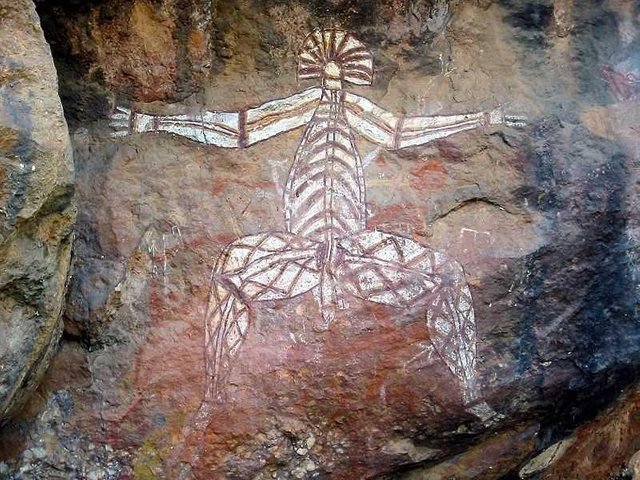It is quite possible that early intelligent and imaginative paleolithic humans formed a world of religious ideas, whose contents we do not know. Unambiguous evidence of the existence of religion in a bipedal man has not been found, but for Neanderthals such evidence becomes more and more. Epoch is no more than the Middle Paleolithic date to find shows that there are certain images of the world from the people who made them, although some scientists have religious traits in doubt.

The funeral of this period gives a reason to assume that the burial of the abandoned relatives is accompanied by a ritual, which implies belief in the afterlife. The habit of burying the dead and putting weapons and pieces of meat to the grave, and sometimes painting graves with red ocher (a symbol of blood and vitality) or putting ohru there indicates that death is not the end of everything. This view, in all probability, is supported by dreams, where the deceased relatives are. In the same vein, a separate cemetery of human or animal skulls, for most bears, is also considered. However, their interpretation as a form of controversial cults.
Neolithic: sacrifice and hunting magic
The picture is somewhat more evident only with the onset of Neolithic: at the present time there are more findings about the apparent nature of cults. First of all, we are talking about so-called sacrifices and offerings. By this means the remaining special pieces - usually the best - or the whole animal carcass. The special arrangement of some of them on red garbage and the presence of stone tools and ivory necklaces leads to the conclusion of the cult worship of the beast. It is possible that ideological closeness to the "harsh rituals" of the North Asian hunters, is done to calm the spirit of the dead animal. Such religious manifestations belong to the sphere of hunting magic, for even Paleolithic people, wholly dependent on hunting and gathering wild plants, consider themselves to be part of the world, where all live. It is not surprising that in many cave pictures, most animals are represented. The fact that all images are concentrated in the depths of the cave, often quite branching, away from the living space, shows the nature of their cults. It is assumed that these images are used in the conduct of a hunting ceremony, which draws the game. The relationship with the initiation ceremony is also not excluded.
Primitive shaman
Apparently, already in the primitive era, the ceremony was entrusted to the "experts". Images of shamans or shamans that have animal attributes (horns, skins, tails, etc.), indicate that shamanic origins go back to prehistoric hunter society. This "mediator" between us and the other world, between man and supernatural powers, allows us to conclude that already in the paleolithic era there is a myth about creation that tells the origin of man, the world and the gods. In this context, perhaps, it is necessary to look at hybrid sculptures - half human half-stars, - revealing the fragility of the boundary between humans and animals in a paleolithic world image. Here, for the first time, an aspect of fertility is manifested, whose expression is Venus Palaeolithic. In the splendor of the female form (abdomen, hips, buttocks, breasts, vulva) the idea of fertility and fertility cultivation is manifested. This obesity epitomizes the abundance of children and food in a living society just by gathering and hunting.
Very nice article you have there! But do not forget to cite your sources and credit your images when necessary
Downvoting a post can decrease pending rewards and make it less visible. Common reasons:
Submit